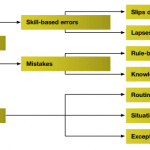
Guest Post by Bill Pomfret (first posted on CERM ® RISK INSIGHTS – reposted here with permission)
Recently, I was talking to the Managing Director of a large recruiting firm for safety professionals in Toronto about the importance of communication skills.
It was very clear that safety leaders are just expected to be experts in the technical aspects of safety, but it’s the ability to communicate about safety that sets apart the great safety leaders from the mediocre.
[Read more…]
